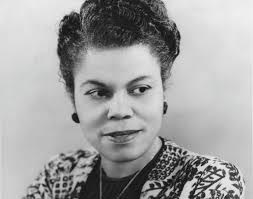Foundation

In 1906, Connecticut nurse Martha Minerva Franklin surveyed African American nurses to see what challenges they faced as a group. [1] Franklin determined that the prestigious American Nurses Association was technically open to African American members, but many State Nurses Associations refused to admit black members. State-level membership was required to join the American Nurses Association and thus, many qualified African American nurses were barred from full membership in the national association. [1]
In 1908, fifty-two nurses, including Martha Minerva Franklin and Adah Belle Samuels Thoms, met in New York City and decided to start the NACGN. Franklin was elected president at the first meeting. [2]
As they left the meeting they had three main goals: "to advance the standards and best interests of trained nurses, to break down discrimination in the nursing profession, and to develop leadership within the ranks of black nurses." To do this, the acting presidents of the NACGN not only actively fought for integration by other means but also attended the annual ANA conference to bring awareness to the topic. [2] In 1912, the NACGN had 125 members. By 1920, that number has risen to 500. [3]
Adah Belle Samuels Thoms served as the first treasurer of the NACGN before taking over the presidency of the organization in 1916. Thoms established a national jobs registry to help black nurses find employment and established the association's first headquarters. [3] During World War I, Thoms campaigned for the American Red Cross to admit African American nurses. This was important because the American Red Cross was the only avenue into the United States Army Nurse Corps. According to Jane Delano, chair of the National Committee on Red Cross Nursing service, the Red Cross was willing to admit black nurses, but the Surgeon General was not. Nurse Frances Reed Elliot was enrolled in the Red Cross in July 1918 but was not immediately assigned. It took the 1918 flu pandemic and the resulting nurse shortage to finally integrate the United States Army Nurse Corps. In December 1918, eighteen African American nurses were appointed to the United States Army Nurse Corps. They were assigned to Camp Grant and Camp Sherman with full rank and pay. Although the patients were not segregated and the nurses were assigned to all services, the African American nurses were housed separately from the white nurses. [4]
Carrie E. Bullock served as NACGN president from 1927 to 1930. Bullock worked to increase communication and community among black nurses. In 1928, she founded and edited the NACGN's official newsletter, The National News Bulletin. [3]
Mabel Keaton Staupers became the first paid executive secretary of the National Association of Colored Graduate Nurses in 1934. [5] Stauper's most important accomplishment was the further integration of US military nurses.[ citation needed ] In 1946, Stauper resigned and her replacement Alma Vessels John was hired. She would shepherd the organization until its dissolution in 1951. [6]
From 1934 to 1939, Estelle Massey Osborne was NACGN's president. [7]









